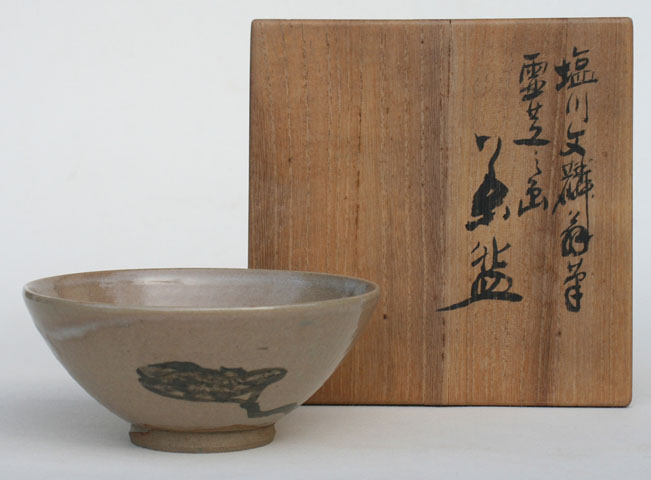Kyôyaki
Chawan, teacup with reishiSigned: Bunrin sha
Seals: Kiyo
Technique: Wheel turned glazed brown kyôyaki with a black tetsu-e, iron oxide underglaze painting. 5 stilt marks marks at the bottom Ø 12,8 x 5,8
Box: Authorized by the grandson of Rokubei III, Rokubei V (1875-1959)
Condition: fine
Reishi (Ganoderma lucidum), commonly known as Ling Zhi in Chinese, is a herbal mushroom used for medicinal purposes.
Bunrin explored the boundaries of the Maruyama-Shijô style and searched for new interpretations in the Nanga style. He also experimented with new painting methods. Through Kôno Bairei (1844-95), his major pupil, his influence reached well into the twentieth century. Bunrin became the createor of Nihonga.
Bunrin’s father was in the service of the Takatsukase family. When in 1820 both his parents died he was sent to Kyoto to study painting. The head of the Takatsukase family arranged a place in Toyohiko’s studio (together with a lifetime allowance of rice).
Bunrin’s connection with the Takatsukase family, which was connected with the imperial court, might have had consequences if he had not moved to a rural village in Shiga from where he travelled and visited temples to study their collections of Ming paintings. Meanwhile he remained in contact with some of the imprisoned key figures of the loyalist groups.
Reference:
Berry & Morioka ‘99 pp. 58-62
Berry & Morioka ‘08 # 66
Conant p. 321
Hillier pp. 335-338
Roberts p. 11
Araki pp. 689-90
Kyoto '98 p. 280
Rokubei III, Shôun, was the son of Rokubei I (1738-1799 and the brother of Rokubei II (1790-1860).
Price: ON REQUEST

